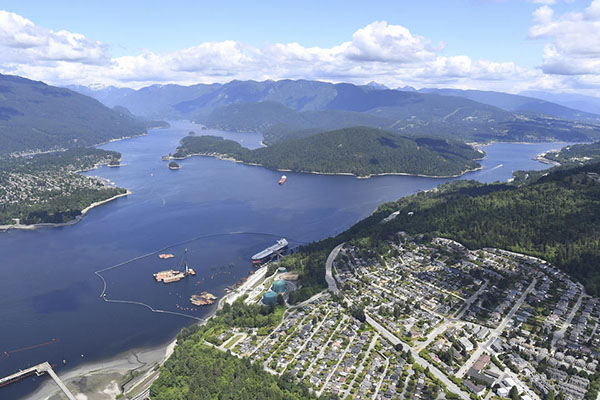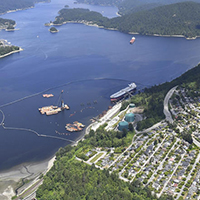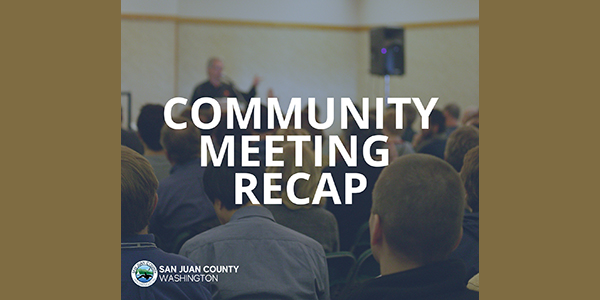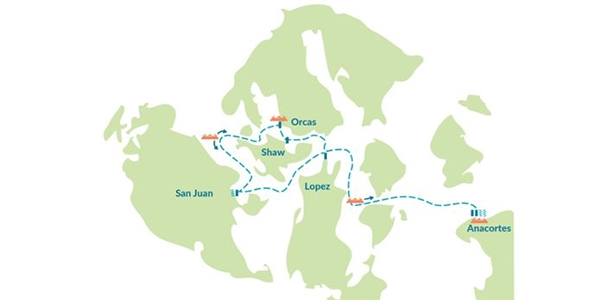The project will dramatically increase tanker traffic in the Salish Sea, and with it the risk of a major spill.
— from Crosscut.com —

The international border that runs through Boundary Pass is a line on the map. It is invisible to the naked eye and the tides that flow through it and the network of inland waterways shared by Washington and British Columbia know no national jurisdiction. It is because of this fluid border that environmental activists, tribal members and government leaders in Washington state paid attention when Canadian Prime Minister Justin Trudeau announced Tuesday that his country would proceed with expansion of a controversial pipeline that will increase oil tanker traffic in the Salish Sea by an estimated 700 %.
The U.S. and Canadian Coast Guards have shared duties managing vessel traffic in the area since 1979. Scientists and indigenous groups from both Washington state and British Columbia work together to study this unique ecosystem of sea stars, salmon and orcas. Yet the decision to go ahead with the expansion of the Trans Mountain Pipeline, which is planned to run from Alberta’s tar sands to an oceangoing terminal in Burnaby, just outside Vancouver, was made in Ottawa, leaving Washington state on the sidelines.
That rankles environmental advocacy groups, such as Friday Harbor-based Friends of the San Juans, who have been tracking the multiyear saga. “As islanders, the Salish Sea is our everything — it drives our economy and our property values,” said the group’s executive director, Stephanie Buffum. “We can’t stand idle at the international border as Canadian lawmakers push this through our shared waters.”
The group’s marine protection director, Lovel Pratt, told Crosscut, “We were outspoken in our opposition, but even though the Salish Sea is a transboundary waterway, unfortunately the project didn’t benefit from a transboundary permitting review process.”
Other recent energy infrastructure projects affecting both countries, like the Keystone XL Pipeline, went through a so-called “transboundary review” that required executive decisions from both national governments.
Pratt, who was on her way to an oil spill prevention and response conference in Vancouver, B.C. called the pipeline project “high risk.” According to a vehicle traffic assessment by researchers from George Washington University and Virginia Commonwealth University that was based on data from 2015, the pipeline project will increase tanker traffic through Boundary Pass and Haro Strait, the narrow waterways separating the San Juan Islands and Vancouver Island, from five per month to once daily.
READ FULL ARTICLE: https://crosscut.com/2019/06/canadas-trans-mountain-pipeline-go-whats-mean-wa
**If you are reading theOrcasonian for free, thank your fellow islanders. If you would like to support theOrcasonian CLICK HERE to set your modestly-priced, voluntary subscription. Otherwise, no worries; we’re happy to share with you.**








The implications of these risks are terrifying.
This project may be a “go” for Canada, but it’s a MUST STOP for Washingtonians and especially San Juan Islanders. Whatever the costs.
https://www.nationofchange.org/2019/06/20/massive-resistance-means-the-trans-mountain-pipeline-fight-rages-on/
“Any government that increases the capacity of a major oil pipeline and expands the oil sands in 2019 is a government that does not sincerely understand the climate emergency we are living in.”